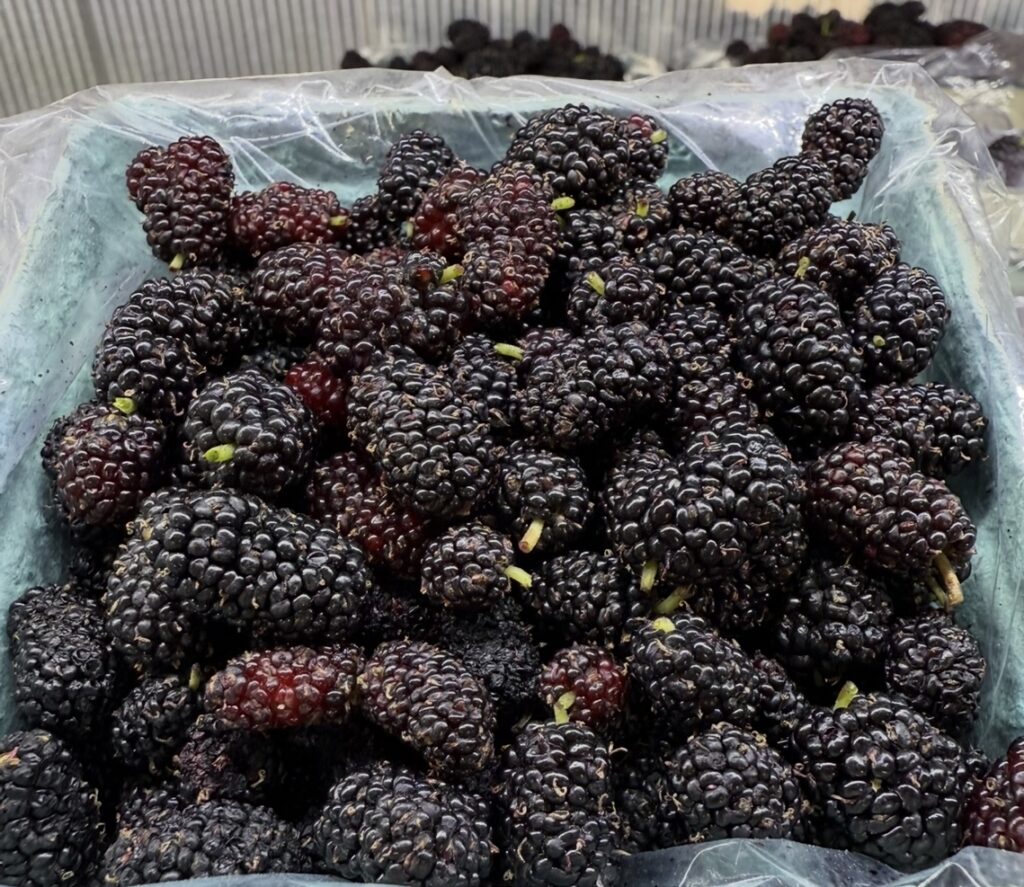Welcome back to Farmacy Friday at Queen Creek Botanical Gardens, where we spotlight plants with powerful healing properties! This week, we’re celebrating a true hidden gem in the orchard—Mulberry. This fast-growing fruit tree not only thrives in Arizona’s climate, but its leaves and berries offer a treasure trove of health benefits.
🍇 What Is Mulberry?
Mulberry trees (genus Morus) are known for their delicious, blackberry-like fruits and broad, heart-shaped leaves. There are several varieties, including red, white, and black mulberry. Here at Queen Creek Botanical Gardens, we cultivate mulberries as part of our edible landscape—and you may have seen them near the fruit tree walk!
💪 Health Benefits of Mulberry
Mulberries aren’t just tasty—they’re powerful! Here’s how they contribute to natural wellness:
- Blood Sugar Balance: Mulberry leaf contains compounds that may help regulate blood glucose, making it a favorite in herbal teas for diabetes support.
- Rich in Antioxidants: The berries are packed with anthocyanins and resveratrol, known to combat oxidative stress and support heart health.
- Immune Support: With high vitamin C and iron content, mulberries boost immune function and help fight fatigue.
- Anti-Inflammatory: Mulberry extracts have traditionally been used to ease inflammation and support joint comfort.
🌳 Fun Fact:
Silkworms feed almost exclusively on white mulberry leaves (Morus alba)—so in a way, mulberries have also played a role in the history of textile production!
🌱 How We Use It in the Garden
At Queen Creek Botanical Gardens, we harvest mulberries during late spring and early summer. Volunteers often enjoy the juicy berries straight from the tree (when the birds don’t beat us to them!). We also freeze-dry mulberries and enjoy them alone or as a topping on your favorite dessert or ice cream. Make sure to stop by our Garden Market and pick some up today!
🍽️ DIY: Mulberry Leaf Tea
Try making your own calming herbal tea at home!
Ingredients:
- 1 tablespoon dried mulberry leaves
- 1 cup hot water
Instructions:
Steep for 5–7 minutes, strain, and enjoy. You can add honey or lemon if you’d like a touch of sweetness.
🌿 Visit & Taste the Difference
Next time you’re at the Gardens, be sure to stop by the mulberry trees and ask our team about their seasonal harvests. These trees are not only a delight to look at but a reminder of how nature provides nourishment and healing when we know where to look.

